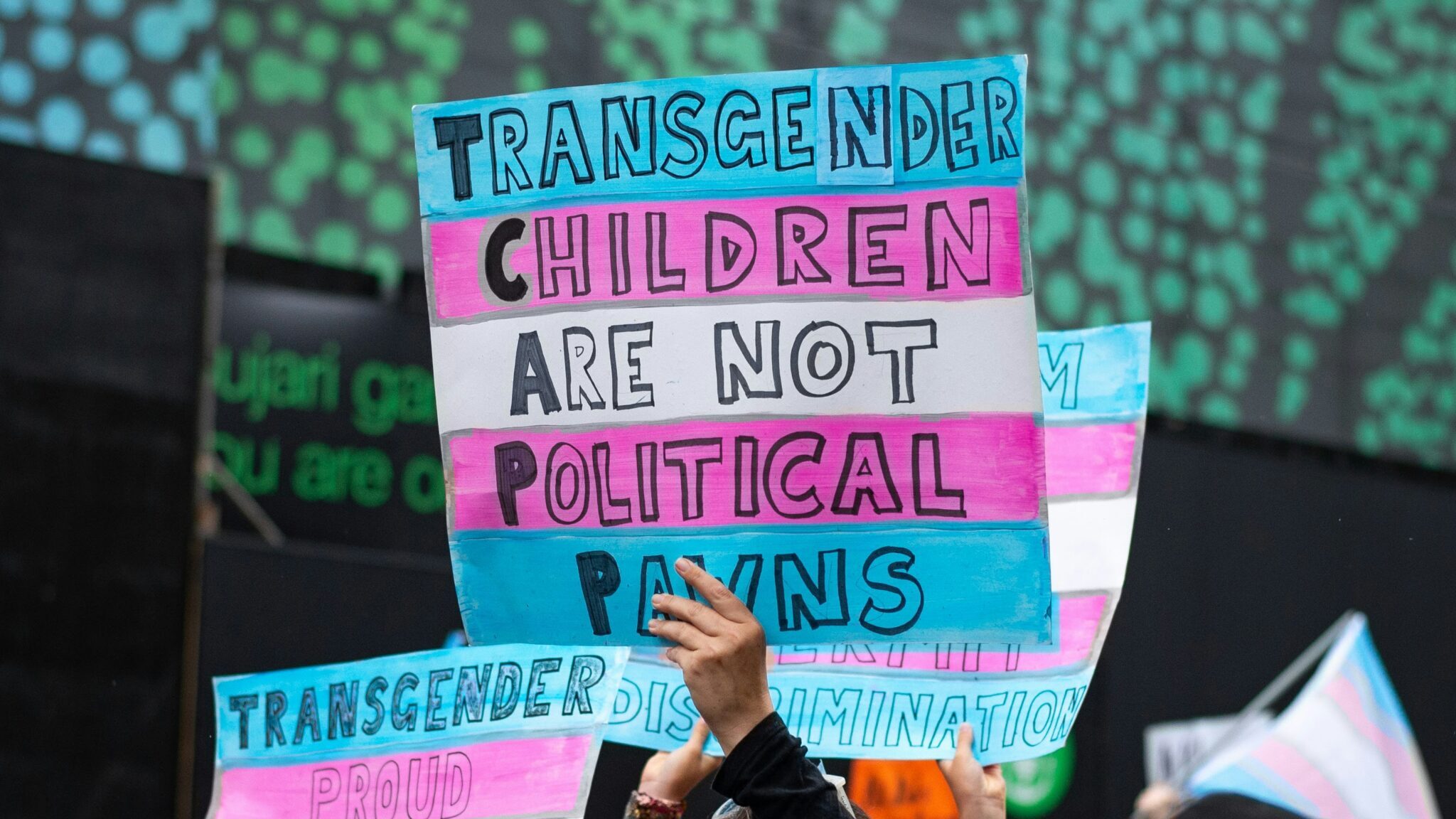Criminalization of Gender-Affirming Care — Interfering with Essential Treatment for Transgender Children and Adolescents
Simona Martin, B.S., Elizabeth S. Sandberg, M.D., and Daniel E. Shumer, M.D., M.P.H.
Published May 19, 2021, by the New England Journal of Medicine
On April 6, 2021, the Arkansas state legislature overrode a veto by the governor to pass legislation making it illegal for medical professionals to provide gender-affirming treatment to patients with gender dysphoria who are younger than 18 or to refer them to other clinicians for such treatment. Several other states have similar legislation pending. As physicians and a physician-in-training who provide gender-affirming care, we are deeply concerned that these political actions threaten the health and well-being of transgender children and adolescents. We have found that such young people are courageous and resilient, yet profoundly vulnerable. Moreover, they already have higher-than-average risk for suicidality and are disproportionately likely to experience violence.
Gender identity — the deeply felt internal sense of oneself as male, female, or somewhere else on the gender spectrum — may or may not align with the sex one was assigned at birth. When it does not align, the umbrella term “transgender” is often used to denote this incongruence. Although not all transgender young people feel distress related to their gender identity, when distress is present and persistent, a mental health professional with experience in gender-identity evaluations may diagnose gender dysphoria.
Gender dysphoria can be treated with both nonmedical and medical interventions. The former may include therapy, coming out to loved ones, or using a chosen name or pronouns and dressing or grooming in a way that matches one’s gender identity (making a social transition); the latter may include hormonal or (when age appropriate) surgical treatments to bring the person’s physical characteristics more closely in line with their gender identity or to prevent developmental changes that don’t align with this identity. Decisions regarding the appropriate treatment for each individual patient are made by the patient, the parents, and the health care team and are guided by evidence-based standards put forth by organizations such as the Endocrine Society, the World Professional Association for Transgender Health, and the American Academy of Pediatrics. Each person has their own gender journey, and there is no one-size-fits-all approach to this kind of care.
Pediatric gender clinics originated in the 1980s in Amsterdam. Dutch physicians recognized that transgender children tended to face mental health challenges during adolescence, as secondary sex characteristics developed, and that early intervention could be lifesaving. They also appreciated the value of delaying decisions that could have a permanent effect on a child. To resolve these conflicts, they created a protocol under which puberty would be paused using medications at Tanner stage 2 (the period during which signs of central puberty are first detected, most often between 8 and 15 years of age) if gender dysphoria had persisted, thereby forestalling the development of unwanted and potentially permanent secondary sex characteristics with a reversible intervention. Gonadotropin-releasing hormone (GnRH) analogues, or “puberty blockers,” have been used by pediatric endocrinologists for more than 30 years for the treatment of precocious puberty. These agents have well-known efficacy and side-effect profiles, and their effects are reversible. In later adolescence, treatment with gender-affirming hormones could be initiated if gender identity remained incongruent with the sex assigned at birth.
The Dutch-developed treatment model was shown to result in long-term improvements in the well-being of adolescents with gender dysphoria1 and was the basis for current guidelines formalizing the treatment of gender dysphoria. These guidelines recommend using GnRH analogues at Tanner stage 2 and prescribing hormone therapy later in adolescence if the patient, the parents, and the medical team all agree with this approach. Today, prescribing these therapies is coupled with education on the safe use of such medications and with close surveillance for potential risks associated with therapy — for instance, monitoring for changes in bone health in children taking GnRH agonists, for risk factors for blood clotting with estrogen therapy, and for polycythemia with testosterone therapy. With proper monitoring and education, the risks associated with these therapies can be mitigated, and the benefits are substantial: use of hormone therapy is associated with improved quality of life, reduced rates of depression, and decreased anxiety among transgender people.2
A recent survey of U.S. high school students conducted by the Centers for Disease Control and Prevention found that 1.8% of students identify as transgender. More than one third of transgender adolescents surveyed had attempted suicide in the previous 12 months.3 As clinicians caring for this population, we are alarmed by this statistic, but we see it as a call to action. We know that mental health disparities between transgender and cisgender children are not inevitable and that with support from their families and communities and access to evidence-based mental health and medical interventions, transgender children and adolescents can survive and thrive.
A multidisciplinary approach to treating transgender young people has been shown to alleviate gender dysphoria when treatment occurs in a supportive environment that attends to the patient’s mental, social, and physical needs. Young people who receive such gender-affirming care report improvements in their overall well-being, and their level of well-being is generally in line with that of their cisgender peers — and sometimes it’s higher.4 Having access to gender-affirming care in childhood and adolescence can have profoundly important mental health benefits: one study found that transgender adults who had had access to puberty suppression during adolescence had lower odds of suicidal ideation than those who wanted such treatment but hadn’t received it.5
Under the new Arkansas law, known as the Save Adolescents from Experimentation (SAFE) Act, physicians who provide gender-affirming therapy for transgender people younger than 18 will be subject to loss of licensure and could be sued. The law’s name implies that following evidence-based guidelines while working closely with patients and families is a form of experimentation. The law references inaccurate information about the care of gender-diverse young people, stating that genital surgeries are being recommended for people younger than 18. In reality, guidelines indicate that genital surgeries should be delayed until the person reaches the age of legal adulthood in their country, which in the United States is 18 years. The law also states that there are no long-term data on the use of puberty-blocking drugs for the treatment of gender dysphoria, when multiple studies have revealed long-term positive outcomes for transgender people who have undergone puberty suppression.4,5
The content of the Arkansas law, and that of similar bills that have been proposed in other states, is not based on data, medical literature, or correct information about the process of treating transgender adolescents. We believe these bills threaten the health, well-being, and survival of transgender children and young adults. By penalizing physicians for practicing evidence-based medicine, the legislation nullifies their expertise and interferes with therapeutic relationships among physicians, patients, and families. It strips power from patients and families who are already marginalized. And although the stated purpose of the legislation is to protect adolescents, we believe that criminalizing what has been shown to be lifesaving treatment will do the opposite — and that the consequences could well be tragic.
The post Criminalization of Gender-Affirming Care — Interfering with Essential Treatment for Transgender Adolescents appeared first on Planet Trans.




